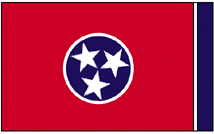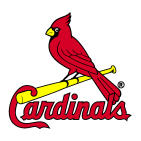[« The Devil’s Teeth] [Thought for the Day: »]
05/02/2005: Citrus Musings...
Someone dropped off a basket of intellectual tangents on my doorstep recently. Usually it's tangerines or those weird cousins of citri, tangeloes...but this year it was tangents? Who know what gives...
Now some of them were kinda sour, not yet fully ripe nor developed.
A few were shrink wrapped and annoyingly so – where you could see what you wanted to get to but couldn’t quite get a purchase on that slick, slippery impenetrable substance to break through.
Ahh…but a few -- very few; it was sort of a bad batch ‘o’ tangents…musta had some hard freezes and ruined all the usually good ones this year -- these few were ripe and juicy and sweet. Just the way a good tangent ought to be. You could rip right through that juicy flesh and bite right into the concept. Delicious they were and ready for consumption.
The good ones -- I ate ‘em all in fit of hungry passion -- and them sour ones, nobody wants them.
But it did put me in mind of one of my most favorite books (and authors): “Oranges” (1967) by John McPhee. Which is a book about literally everything you could ever wish to know about Oranges; from their place in various cultures and history; to their production and growth cycles.
You can almost taste them…succulent and sweet, dripping in orangy-fruit flavor as you read through the pages of this Oh-So-Sweet book.
Author John McPhee was educated at Princeton University and Cambridge University. His writing career began at Time Magazine and led to his long association with the New Yorker, where he has been a staff writer since 1965. The same year he published his first book, A Sense of Where You Are, with FSG, and soon followed with The Headmaster (1966), Oranges (1967).
This John McPhee bio is from winkipedia
Below is part of the opening paragraph of ORANGES:”The custom of drinking orange juice with breakfast is not very widespread, taking the world as whole, and is thought by many people to be a distinctly American habit. But many Danes drink it regularly with breakfast, and so do Hondurans, Filipinos, Jamaicans, and the wealthier citizens of Trinidad and Tobago. The day is started with orange juice in the Colombian Andes and to some extent in Kuwait. Bolivians don’t touch it at breakfast time, but they drink it steadily for the rest of the day. The “play lunch” or morning tea, that Australian children carry with them to school is usually an orange, peeled spirally halfway down, with the peel replaced around the fruit. The child unwinds the peel and hold the orange as if it were an ice cream cone. People in Nepal almost never peel oranges, preferring to eat them cut in squares, the way American athletes do. The sour oranges of Afghanistan customarily appear as seasoning agents on Afghan diner tables. Squeezed over Afghan food, they cut the grease. The Shamouti Orange, of Israel, is seedless and sweet, has a thick skin, and grows in Hadera, Gaza, Tiberias, Jericho, the Jordan Valley, and Jaffe; it is exported from Jaffe and for that reason is known universally beyond Israel as the Jaffe Orange. The Jaffe Orange is the variety that British people consider superior to all others, possibly because Richard the Lionhearted spent the winter of 1191-92 in the citrus groves of Jaffe…..
The book is a GEM of Oranges information and history. One of my favorites by this author.
Karen on 05.02.05 @ 04:56 AM CST







